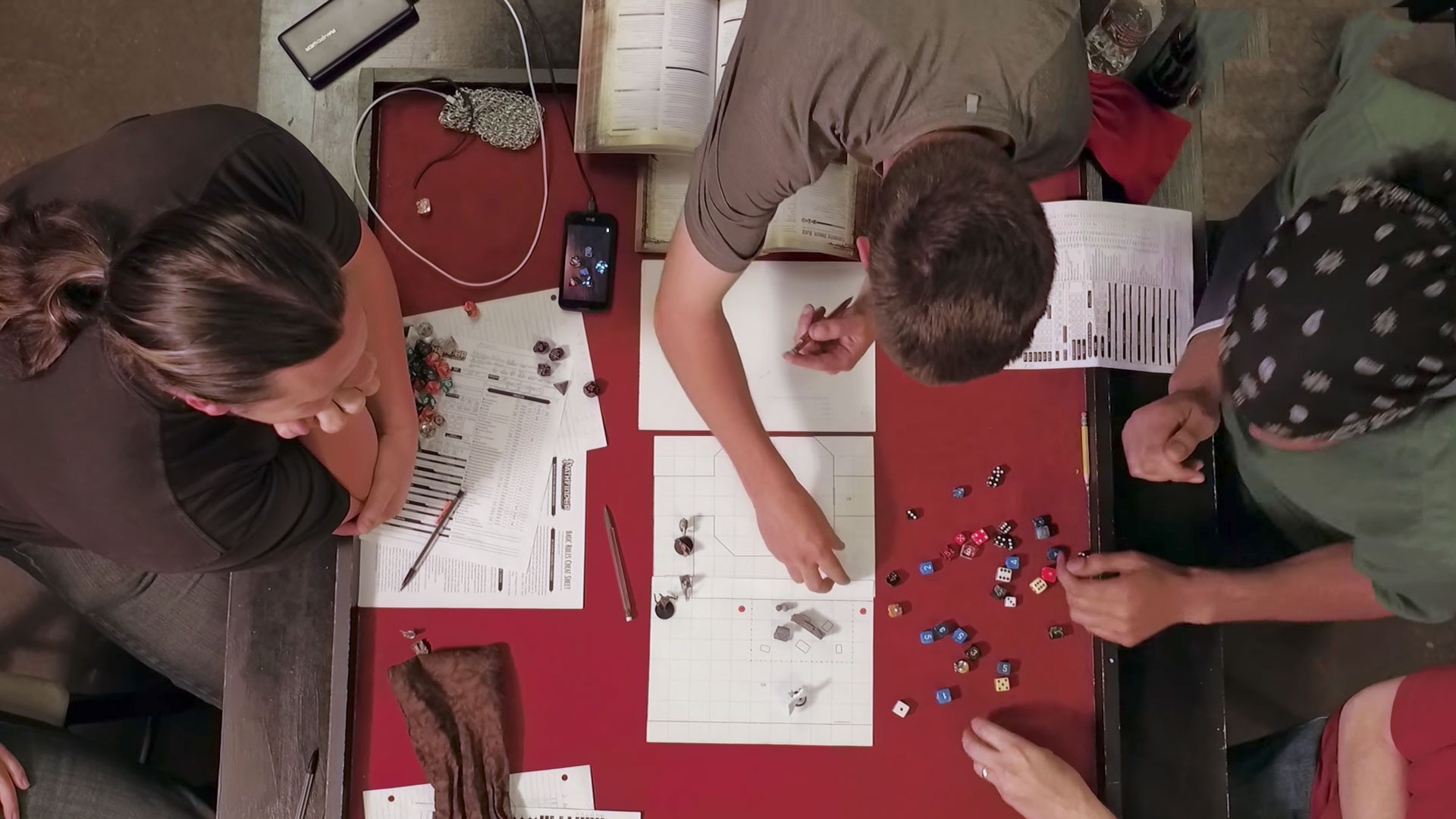"How do I not get sued?" Paizo creative director James Sutter asked when talking to me about his inspirations for the company's new tabletop roleplaying game Starfinder, which launched at GenCon today.While he's careful not to draw too many direct correlations, he's drawing from a deep well of pop culture darlings. He cites the Star Wars, Alien, and Guardians of the Galaxy franchises among the films he and his team drew from for Starfinder, which is set thousands of years in the future of Paizo's blockbuster Pathfinder franchise. Firefly and The Expanse also make the list, along with the comic book series East of West and Saga. Now Sutter hopes that fans of those works will want to tell their own stories of space adventure with the help of a few friends.
Advertisement
"In the general media, you've got Star Wars back in a big way," Sutter said. "I feel like Guardians of the Galaxy really did a lot for science fiction. We're making new Alien movies with Prometheus. I feel like there's kind of a renaissance of science fiction and science fantasy in pop culture right now."The creators of Pathfinder had wanted to make a science fantasy game for years, inspired in part by Games Workshop's Warhammer 40,000 miniatures game, which takes Warhammer's fantasy aesthetics and drops them into a grimdark future."I was really excited to take the Pathfinder setting, which I've been working on for 10 years with all my coworkers, and take it into the future," Sutter said. "Let's take all our elves and wizards and whatnot but add spaceships and laser guns because that's just fun. We're doing it now because we saw there was an audience call for it."Paizo began testing that audience in 2012, around the same time that Brian K. Vaughan and Fiona Staples launched their space opera series Saga, by releasing Distant Worlds, which introduced the other planets in the solar system of Pathfinder's version of Earth. The book was well received and went on to become the basis for much of Starfinder's setting."We could tell that there was this sort deep need among a segment of the audience, but we had no idea how big that segment was," Sutter said. "Eventually we got to a point where we felt that Pathfinder was in a safe place and we wouldn't be endangering it by doing something new, which takes a huge amount of staff time and resources."
Advertisement

Advertisement
"They're kind of like the shapeshifter, doppelganger kind of race," Sutter said. "The idea was if you're going to do a shapeshifter race, why do they have to be humanoid to start? They can disguise themselves as anything. We had heard from a lot of people that they wanted to play really weird creatures."The first adventure for Starfinder is set on Absalom Station, which Sutter describes as their version of Babylon 5 or Deep Space Nine. A mysterious asteroid has been found in the hyperspace dimension and brought back to port. Investigating it will lead players on a planet hopping adventure that gives them a tour of some of the game's established planets but also leaves game masters room to design new ones. It's a time and setting similar to Star Trek: Discovery, which debuts this fall."You're at the dawn of interstellar exploration," Sutter said. "You've got this whole galaxy of billions of stars."The difference is that there is also magic and fantasy races straight out of Lord of the Rings—the same ones that form the base of Pathfinder and its progenitor and rival Dungeons & Dragons."While we thought it was very important for people to play science fantasy feeling races, things that were new and different, we knew part of the appeal of this is elves in space or dwarven sky citadel starships floating around through the asteroid belt and mining them. We know that people want that.""You're at the dawn of interstellar exploration. You've got this whole galaxy of billions of stars."
Advertisement
The Starfinder book contains material for using those races along with monsters and other elements of Pathfinder in the new setting, but the rules of the new game are different. Starfinder will require less math and die rolling to attack enemies and will have more flexible character customization options. The rules have been simplified in part to make the game more accessible to new players, who might be inspired by today's glut of science fiction media or video games like Halo and Mass Effect, the way previous generations came to D&D after reading or watching The Lord of the Rings."As much as I love Pathfinder, and Dungeons & Dragons before it, there was a sense that you needed somebody who already knew how the game work show you how to play," Sutter said. "Any time you do a new game, you're able to say what is the thing that drove you nuts about the game you were working on before?"Science fantasy has had fans since Edgar Rice Burroughs published A Princess of Mars 100 years ago, and Sutter doesn't think that the desire for more ever went away. But he acknowledges that as successful as Rogue One and Guardians of the Galaxy have been, the genre's has had some major failures like Valerian and the City of a Thousand Planets and Jupiter Ascending."The thing is, space opera is just dramatic adventure set in space, and I don't think people will ever get tired of adventure," he said. "There are always going to be people who want to explore other worlds. That's just human nature. So I think the biggest lesson for us from space opera flops is that it's not enough to put together a bunch of cool toys and pretty concept designs—you still have to use them to tell a compelling story.""Have thoughts? Swing by Waypoints forums to share them!"